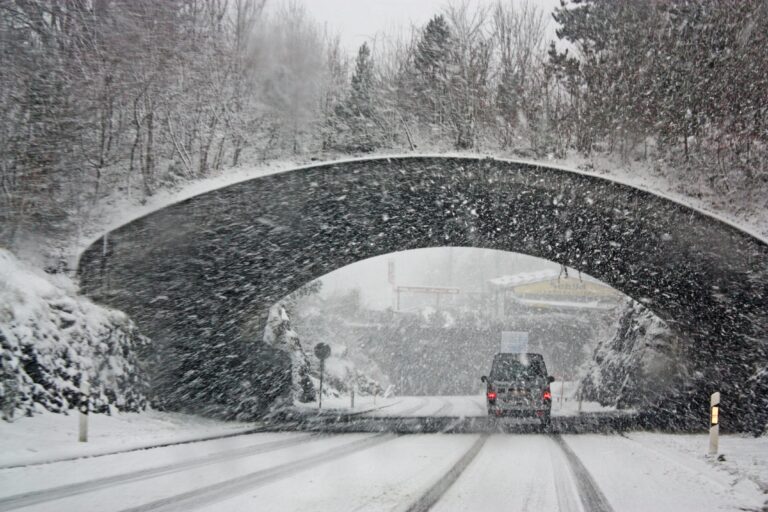The Risk to Supply Chains in North America
First published: April 2023


Danny Ramon
Intelligence & Response Manager
Cargos at Risk
Supply chains are being adjusted to an increasingly insecure world and, in many cases, shortened to reduce risk. With great power competition being in full swing, the U.S. government is attempting to bring back strategic industries to American shores. To compete with other economic blocks and China in particular, the U.S. is abandoning some of its once sacred free-market rules in favor of aggressive industrial policy. Recent legislation, such as the Inflation Reduction Act and the Chips and Science Act, introduced vast subsidies for future technologies that are produced domestically, including renewable energy, electric vehicles and semiconductors. As a result, some multinational executives will consider to “reshore” most, if not all, of their manufacturing.
Supply chain planners and logistics managers will therefore need to perform risk assessments that are tailored to the unique circumstances of the United States, but what are these? Despite the U.S. being a highly developed economy, there are still plenty of supply chain challenges to consider. Infrastructure is aging, logistics are complicated and natural hazards are diverse. Another major risk factor is criminality, with over USD 214 million worth of cargo being reported stolen across the country in 2022. This report will delve into each of these challenges to assess the risk to supply chains in the United States.
As a major base for manufacturing, Mexico is an important link in the global supply chain of many major companies. Multinationals in the automotive, textile, aerospace, medical, electronic and appliance industries in particular rely on Mexico for a significant portion of their manufacturing capacity, particularly in servicing the huge consumer market of the United States.
– [Insert Author]
Infrastructure
The United States lags behind other developed nations in terms of infrastructure spending and the quality of services provided. The country’s strong economic performance after World War II was partially due to robust investment in infrastructure in the twentieth century. However, whilst its population has rapidly increased since then, most of its physical infrastructure systems have not been upgraded and are now approaching the end of their lifespan.
In 2019, the U.S. ranked 13th on the World Economic Forum’s global infrastructure ranking due to decades of neglect. Although the country performs extremely well when it comes to road connectivity (rank 1), the quality of road infrastructure is still lacking (rank 17), with one in four bridges being considered “deficient” or “functionally obsolete”. Additionally, the U.S. lacks secure parking, unlike in Europe, where the EU subsidizes the development of secure parking facilities. In terms of aviation, the U.S. is ranked first when it comes to airport passengers. However, America’s biggest infrastructure deficiency is railroad density (rank 48). While China’s Fuxing bullet train is already racing across East and Southeast Asia – with one track to Tibet requiring no less than 47 tunnels and 121 bridges – the construction of high-speed rail connections in the U.S. has been mired in red tape. A lack of funding, environmental concerns, and opposition from local communities continue to delay key projects, such as California’s long-awaited high-speed railway between San Francisco and Los Angeles, which is not expected to become fully operational until 2033. If more rail connections would be built, it would greatly improve the efficiency of supply chains in North America, especially since the freight train system in the U.S. is considered to be one of the most cost-efficient in the world. However, this efficiency has come at the expense of infrastructure maintenance and the working conditions of railway workers. For years, the industry has slashed its workforce and resisted regulation, which resulted in railway workers threatening a strike that could have devastated the American economy at the end of 2022.
Fortunately, the strike was avoided when the U.S. government reached a deal with a dozen unions representing 115,000 workers to keep supply chains stable. However, many of the worker’s grievances persist, with the lack of paid sick days being their top concern. The threat of industrial action could flare up again this year, especially following recent incidents in East Palestine OH, and Van Buren Charter Township MI, where residents needed to be evacuated after the derailment of freight trains that were transporting hazardous chemicals. The derailments and subsequent chemical spills are now seen as the culmination of a long trend of cost-cutting in the rail industry.
Despite infrastructure spending having long-standing bipartisan appeal, Democratic and Republican administrations alike have repeatedly failed to pass legislation to upgrade America’s infrastructure. This finally changed in November 2021, when Congress passed the USD 1.2 trillion Infrastructure Investment and Jobs Act (also known as the bipartisan infrastructure framework, or BIF), which authorized planned spending on roads, bridges, railways, ports and airports. Although BIF is the largest federal investment in infrastructure in over a decade, it will not be enough to solve all deficiencies. According to a recent report by the American Society of Civil Engineers, the U.S. must allocate an additional USD 2.6 trillion towards infrastructure in the next decade to meet its basic national needs.
$214M+
worth of cargo being reported stoeln caross the country in 2022
$1.2T
authorized to improve critical infrastructure
Logistics
In addition to aging infrastructure, companies operating in the U.S. face a myriad of logistical challenges. Both the spot rates for full truckloads and fuel prices have been rising. In this economic climate, carriers who are trying to maximize profits are more likely to cut corners. Companies with high-value cargo will often pay extra for it to be transported in a dedicated trailer, in order to avoid the trailer being opened along the way. However, carriers often “double-load” these containers so that they can charge twice for the same transport, which increases the risk of cargo being compromised. Another issue arises when carriers give their loads to other carriers in double or triple-brokering schemes, which can cause custody issues if cargo is damaged or goes missing. Incentives to cut corners have increased due to capacity issues, with a shortage of qualified drivers being one of the main causes. Young people are no longer attracted to truck driving due to the long hours, low wages, unpaid waiting times, and high overhead costs. The importance of trucker working conditions is often
overlooked, even though it has a significant impact on issues such as labor shortages, strikes, and the risk of insider-related problems. An unsatisfied driver is more likely to ignore procedures, collude in theft, follow carrier policies that involve double-loading, or take routes that are unsafe or off course.
Road transportation in the U.S. is dependent on a large number of smaller carrier companies, with 90% of carriers operating five trucks or less. This causes the U.S. broker market to be less efficient and more opaque than its European counterpart, where the market is dominated by fewer, larger carriers. Another issue that arises from having to rely on smaller carrier companies, is that these companies are less resilient. For example, when a driver that works for a small carrier company is involved in a fatal crash, the insurance payout can often bankrupt a small to medium-sized company. These so-called “nuclear verdicts” are often several times larger than the amount of damages that would typically be awarded in similar cases involving private individuals, often running into tens of millions of dollars. Because out-of-state carrier companies are at a disadvantage in courtrooms with a local judge, some carrier companies decide to avoid certain counties altogether. Routes can therefore be chosen based on insurance premiums, rather than security risks or efficiency.
Criminality
The threat of criminality to supply chains in the U.S. can be divided into two categories: organized and opportunistic. The first category involves groups that are centered and organized around cargo theft. In the majority of cases, these groups are specialized and do not pursue other activities or feed into a larger criminal structure, unlike in Mexico for example, where criminal groups that pursue cargo theft are usually involved in multiple other criminal activities. Another difference is that organized cargo crime in the U.S. is largely non-violent. Criminal sentences in the U.S. increase significantly when perpetrators of cargo theft are caught with weapons, or threaten to commit violence, something organized criminal groups appear to be aware of. Organized groups often target full tractor-trailer loads. They will either steal the trailer, or the tractor and the trailer, which is often referred to as “straight” cargo theft. To do this without using violence, organized cargo thieves often take advantage of negligent drivers. Tractor-trailer drivers in the U.S. frequently leave their vehicles running when they go outside at a truck stop for
a short amount of time. There appears to be a belief among drivers that a tractor trailer is a specialized piece of equipment that not anyone can operate. However, organized cargo thieves are more than capable of doing so. After they steal the tractor-trailer, thieves can swap the tractor or the license plates to avoid detection.
Tracking devices are a good way to mitigate the risk of a full trailer being stolen, however, organized cargo thieves in the U.S. increasingly use jammers to block the signals from such trackers.
Another modus operandi of organized groups is known as “strategic” cargo theft, which involves fraudulent means, such as fictitious pickups and driver identity theft. In these cases, the thieves will pose as a legitimate trucking company, will negotiate a price for a shipment with a freight broker, pick up the load and disappear. This type of theft, where cargo is unknowingly handed over to the thieves, used to be more common at ports on the West Coast, particularly in southern California. However, the trend of strategic cargo theft appears to be moving toward states on the East Coast, as well as Indiana and Illinois. This is mainly because container volume is also shifting. California has long been the leader in import container volume and still is. However, since the Covid-19 pandemic and the supply chain disruptions associated with it, a large chunk of that container volume has shifted to facilities on the East Coast. The recorded increase in strategic cargo thefts might be due to the fact that the processing procedures and police in eastern states are still adapting to this form of fraudulent theft. Generally speaking however, cargo theft hotspots tend to reflect where the largest volume of interstate cargo is flowing and center around ports, rail yards, distribution centers and truck stops; especially in Southern California, Memphis, Atlanta, Chicago, and the Dallas-Fort Worth metropolitan area.
A recent development that impacts crime across the country is the rising cost of living. With consumer prices rising at the fastest pace since 1981, criminals grow more desperate and cargo theft is becoming more lucrative. Organized cargo thieves often target products that can be easily resold, such as food, beverages, clothing and footwear. Additionally, cargo thieves have proven to be very agile to market conditions. Any items that are scarce or restricted for purchase, which can be resold for more than the retail price, such as the latest generation of gaming consoles and computer graphics cards, are heavily targeted. In order to identify these shipments organized cargo thieves often rely on insider collusion, whether that is direct employee involvement, or employees unknowingly feeding information to criminal networks. Additionally, criminals have infiltrated airports, docks and warehouses, often as temporary employees, in order to gain access to information about the location of high-value shipments.
Insider collusion does not play a role in the second category: opportunistic cargo crime. Opportunistic cargo crime has been on the rise in the U.S. since supply chain disruptions became major news during the Covid-19 pandemic. When local criminals discovered that containers and trains were sitting idle for days, if not weeks at a time, they started pilfering from areas that experienced logjams in their logistics, such as the railyards in Memphis, Atlanta and Los Angeles. At the time, so many packages were being discarded along the railroad tracks in Los Angeles that it even caused a train to derail. Besides supply chain disruptions opportunistic cargo thieves also exploit large scale protests or riots that soak up police attention. For example in Memphis TN in January 2023, when opportunistic cargo thieves
overwhelmed the industrial drop lots and carrier yards whilst a Black Lives Matter protest was escalating into riot in another area of the city. The same holds
true for natural disasters or any other event that soaks up police attention. Similarly, organized criminal groups tend to move towards jurisdictions where
police forces are stretched thin. In areas where police departments have had their budgets reduced, spikes in cargo crime were reported not long after. In recent
years, police resources have often been diverted away from cargo theft taskforces and gone towards the fight against violent crime. Although there has been no statistically relevant change in the rate of violent crime in the U.S. in the last two years, according to the most recent data by the Bureau of Justice Statistics and the FBI, the murder rate in the U.S. did see a significant increase of 30% between 2019 and 2020, with a continued rise in 2021. This might be contributing to the general perception that all crime is increasing. In October 2022, a Gallup poll concluded
that 56% percent of Americans perceive crime to be increasing in their local area, the largest percentage Gallup ever recorded. Interestingly, an even higher percentage of the population (78%) believes there is more crime in the U.S. overall. The discrepancy between these two figures suggests the rise of social media might also play a role in shaping this narrative, by increasingly exposing Americans to criminality that takes place elsewhere in the country. Despite the fact that this public perception is not supported by crime statistics, it is putting political pressure on state governments to redirect resources away from cargo theft taskforces and towards the fight against violent crime. The lack of resources in law enforcement, especially in cargo crime divisions, is believed to be at least one of the reasons why reported cargo thefts have increased by 20% in 2022.
Natural Hazards
Supply chains in the United States can be affected by a wide range of natural hazards depending on their location. In 2021, 97 natural disasters occurred across the country. Out of the total number, 64 events were classified as severe thunderstorms, while 14 were caused by a combination of drought, heat waves, and wildfires. Additionally, 12 incidents were reported as flooding, with the rest consisting of winter storms, cold waves, and tropical cyclones. In terms of impact, eight out of the ten most costly natural disasters in the U.S. were tropical cyclones. Hurricane Katrina, which struck in 2005, was the most expensive natural disaster ever recorded in the country, causing an estimated USD 182.5 billion in damages and killing almost 1,400 people.
The Atlantic hurricane season lasts from June 1st until November 30th. Although uncertain, early predictions by Tropical Storm Risk indicate that the 2023 hurricane season will be 15% below the 30-year norm, with 13 tropical storms, six hurricanes and three major hurricanes to be expected. In the event of a disruptive storm, supply chains cannot only be affected by natural hazards such as flooding and landslides, but also by second, third and fourth-order consequences. For example, flooding can cause roads to become inaccessible or power grids to fail. It could also prompt looting or inspire other forms of criminality. As previously mentioned, cargo thieves have proven to adapt quickly to market conditions. In the past, building materials such as shingles and lumber have been targeted by cargo thieves after their prices rose rapidly following large-scale natural disasters. In the years going forward, climate change will continue to increase the threat stemming from natural disasters.
The effects of climate change can already be observed in the number of wildfires, with nine out of the ten largest wildfires in California since 1932 having occurred in the last decade. The 2021 California wildfires were some of the most devastating and destructive in recent memory, with millions of acres burned and thousands of homes destroyed. The fires caused road closures and reduced capacity on highways, making
it difficult to move goods in and out of the affected areas. This resulted in delayed shipments, increased transportation costs, and reduced availability of certain products. That same year, Winter Storm Uri brought record-low temperatures and heavy snowfall to large parts of the country. The effects were especially
devastating in Texas, where supply chains were not only affected by snow and icy conditions, but also by widespread power outages and water shortages, which heavily impacted industrial zones in the Dallas-Fort Worth metropolitan area. With much of the country’s infrastructure aging and vulnerable, extreme weather events such as these become even more devastating.

This is an image caption. Lorem ipsum dolor sit amet, consectetur adipiscing elit. Ut elit tellus, luctus nec ullamcorper mattis, pulvinar dapibus leo.
Conclusion
Companies that operate in the United States have to contend with various challenges that could disrupt their supply chains. America’s physical infrastructure systems are approaching the end of their lifespan and could fail in the event of natural disasters, which are becoming more common due to climate change. Furthermore, companies operating in the U.S. face a myriad of logistical challenges, such as rising fuel prices, a shortage of qualified drivers, and an opaque broker market that incentivizes carriers to cut corners. The threat of cargo theft is also significant, with both organized criminal groups and opportunistic thieves taking advantage of supply chain disruption, a lack of police capacity, and changing market conditions. Unfortunately, supply chain planners and logistics managers tend to be reactive rather than proactive when it comes to taking security measures. However, it is crucial to perform due diligence and other preventative activities, including a comprehensive risk assessment of the entirety of a supply chain, even if it is located in the United States. Additionally, steps should be taken to improve cargo visibility in real- time. Overhaul’s LE Connect platform connects with law enforcement for expedited theft recovery around the world, helping to achieve a cargo protection rate of over 99%.





